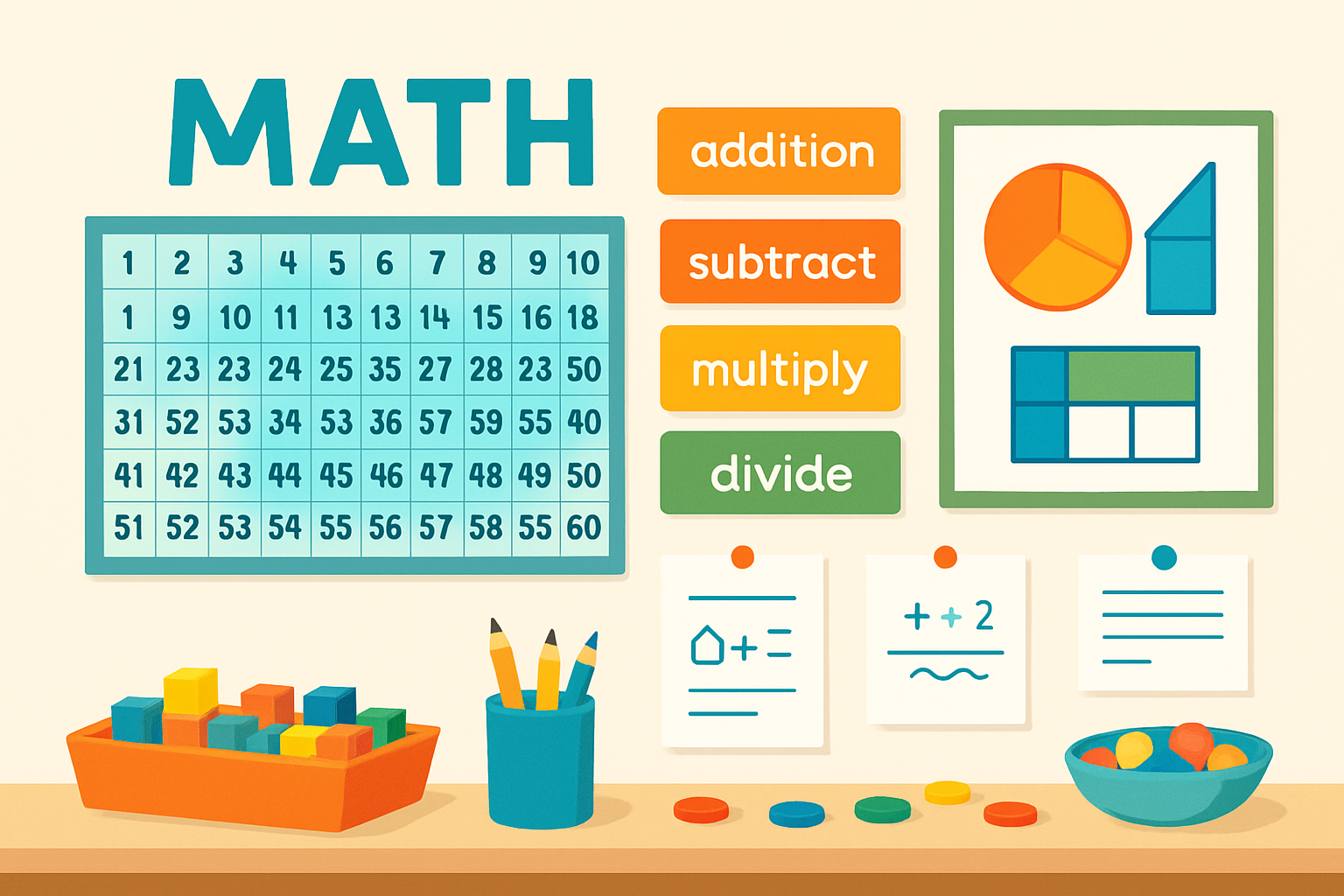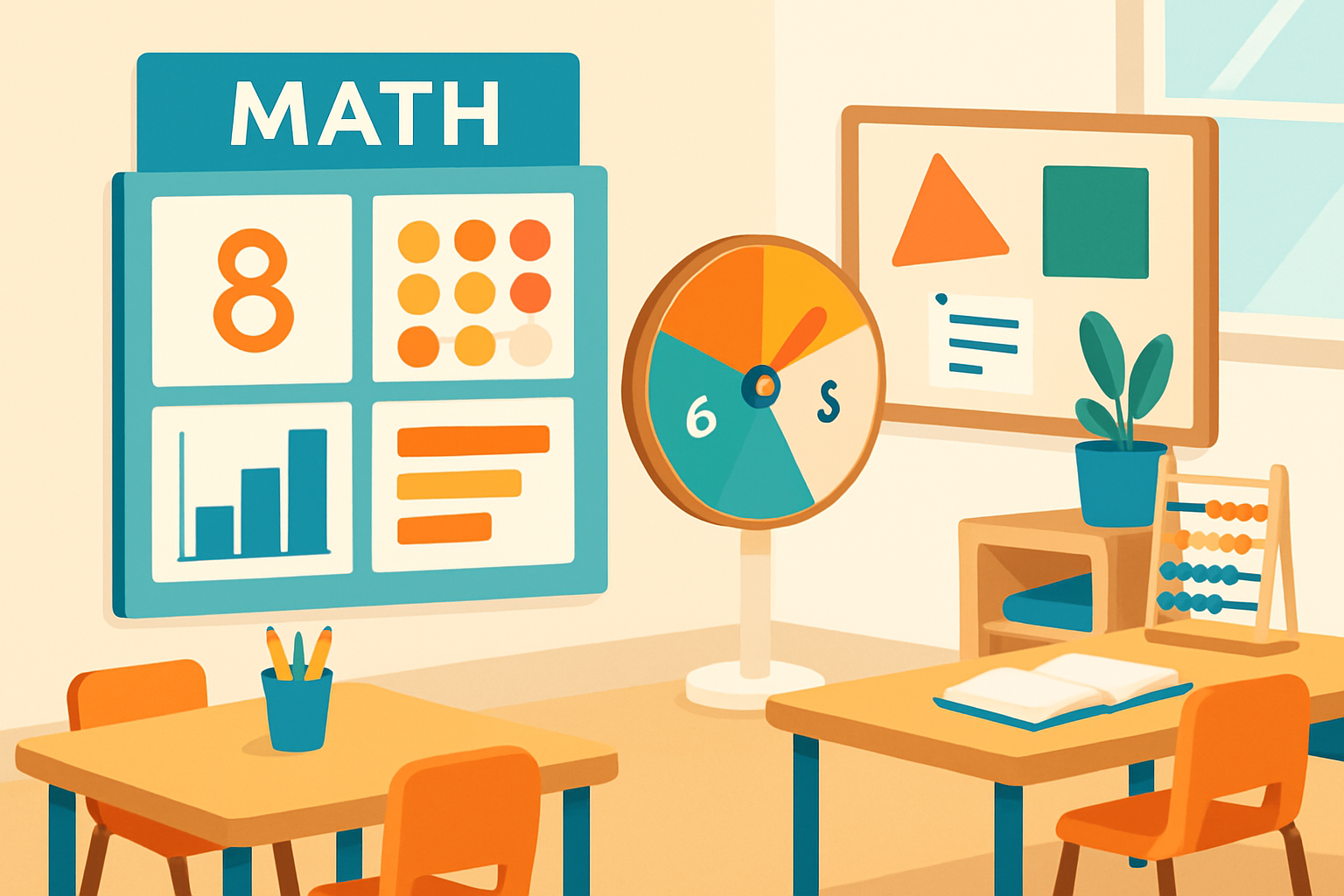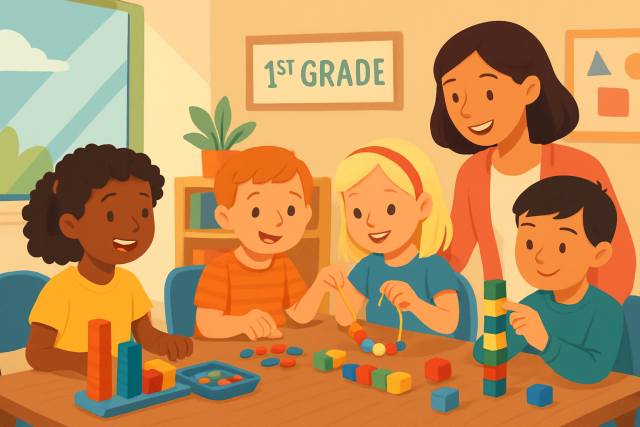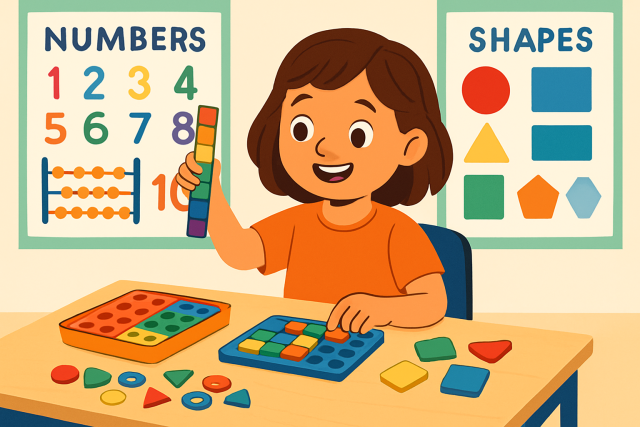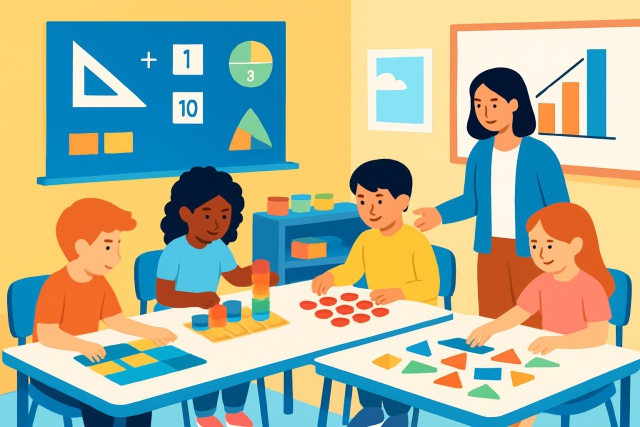Building Your First Math Focus Wall for Elementary
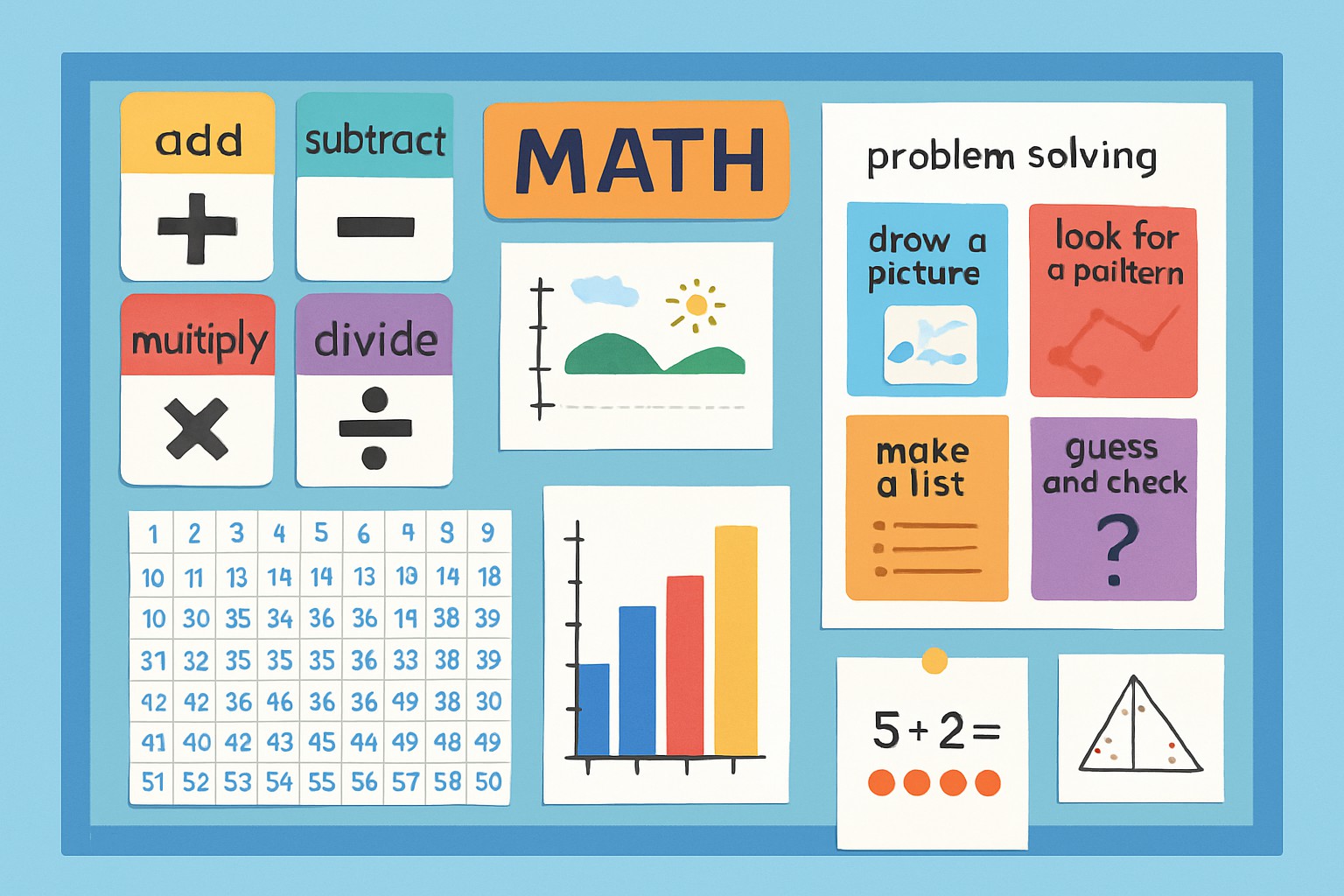
A math focus wall is a clever little corner in the classroom that brings key math concepts and vocabulary to the forefront specially for elementary students. Think of it as a visual buddy that supports teaching and quietly boosts learning all year. By giving kids a clear space to see important math ideas, a focus wall ramps up engagement and helps make tricky abstract concepts feel more down-to-earth. This handy visual guide doesn’t just clear up confusion.
Creating a math focus wall adds a surprisingly high dose of value for both teachers and students alike. It lays out math concepts in a visual way that really clicks for learners who thrive on charts and diagrams. Plus, the wall puts clear manageable goals right in front of students so they know exactly what they’re aiming for. This can be a game changer for staying motivated. Over the course of the year, it acts like a trusty sidekick constantly reinforcing key math skills and vocabulary. This makes it easier to both remember and actually use what they’ve learned.
What a Math Focus Wall Is and Why It Truly Matters
A math focus wall is an interactive and ever-changing display that shines a spotlight on the key bits of a math unit or concept. For elementary students it takes head-scratching ideas and breaks them down into bite-sized manageable pieces using pictures, words and examples that speak their language. The wall gives teachers a handy way to pull together standards, vocabulary and strategies all in one easy-to-access spot.
- Vocabulary words presented with clear definitions and visuals that make them easier to grasp and remember
- Math standards or learning goals displayed to keep everyone focused on the main objectives
- Step-by-step problem-solving walkthroughs that show the process and nudge students to think critically
- Interactive visuals like number lines, charts and shape models that invite students to dive right in
- Showcasing student work to boost pride and foster a genuine sense of ownership
- Conveniently placed hands-on tools such as counters or base-ten blocks within arm's reach along the wall
How to Plan Your Math Focus Wall (Without Feeling Overwhelmed)
Before you dive into putting together your math focus wall, it’s worth taking a quick step back to size up your classroom setup and what your curriculum really calls for. Consider where your students tend to gather most, and how the wall can slide seamlessly into their daily routines without feeling like an afterthought. Making sure the wall’s content aligns snugly with curriculum standards keeps it relevant and laser-focused on the specific skills your grade level actually needs.
Those concepts that really matter.
Scout out a spot on the wall that’s in a high-traffic area and easy for all your students to see and reach without any fuss.
Round up your supplies like bulletin board paper, borders, handy pockets, sticky notes and any manipulatives you might need to bring the display to life.
The stuff students need to really get down cold.
Design a layout that’s flexible enough to evolve over time. It should welcome fresh student input and regular updates so it never feels stale or stuck in the past.
Getting your students involved in planning the math focus wall can really amp up their engagement and make them feel genuinely tied to their own learning journey. Try inviting them to share which math topics they find tricky or fascinating. Their input can help shape the whole design. This kind of teamwork might mean choosing visuals together, figuring out the best spots to showcase their work or even creating interactive features that spark some friendly peer teaching.
Key Elements to Feature on Your Math Focus Wall That Really Make a Difference
To really get the most bang for your buck from a math focus wall, it’s gotta cover vocabulary, skills and engagement all at once. Each piece plays its own clear role in reinforcing what students pick up along the way. It helps them wrap their heads around math concepts and turns tricky abstract ideas into something tangible they can actually hold onto.
- Having clear math vocabulary and visual aids helps students wrap their heads around terms and use them correctly, almost like giving them a trusty toolbox.
- Sharing current learning objectives keeps students in the loop about what they are working toward and what’s expected—no surprises, just a clear path.
- Visual aids and charts provide solid examples of tricky abstract math concepts like number lines or fraction circles, making them feel more down-to-earth.
- Showing problem-solving steps lets students see a thoughtful step-by-step approach to tackling tricky problems and breaks them down so they’re not intimidating.
- A dedicated math facts corner encourages quick recall and builds fluency, turning memorization into something almost effortless over time.
- Interactive elements like question prompts or mini-challenges invite students to dive in actively and mull things over, making learning feel less like a chore and more like a fun puzzle.
A Friendly Guide to Getting Your First Math Focus Wall Up and Running
Setting up a math focus wall does take a bit of planning and a careful touch to get everything just right. These steps are designed to help you build a resource that slides seamlessly into your daily teaching groove and actually supports your students without adding extra stress.
Find a clear noticeable wall space where students can easily gather and get a good look at the information without feeling like they’re playing a game of hide and seek.
Pick out key content that fits your learning goals such as vocabulary cards, charts, problem-solving tips and some hands-on elements to keep things lively.
Arrange everything neatly using borders, pockets and bulletin boards. Make sure items are right at eye level so students can reach them without standing on their tiptoes.
Add interactive bits like flip cards, magnetic pieces or whiteboard spots where students can jump in and contribute their own ideas.
Take your students on a little classroom tour to show off the math focus wall and explain how they can make the most of it. It’s more fun when they know the ropes.
Set aside time regularly to freshen up the wall, toss in student work and swap out content to keep it aligned with what the class is currently learning.
How to Make Your Math Focus Wall Captivating for Students Because Let’s Face It, We Could All Use a Little Extra Spark
Try weaving a math focus wall into the very fabric of your classroom culture by getting your students involved. When kids don’t just glance at the wall but actually interact with it, it stops being a mere decoration and starts to feel like a trusty sidekick in their learning journey—boosting teamwork and giving them a genuine sense of ownership.
- Kick off each math lesson with a quick glance at the focus wall to set a clear learning target. Think of it as your lesson’s North Star.
- Encourage students to take the spotlight by explaining key vocabulary or walking their classmates through problem-solving steps while using the wall as their trusty roadmap.
- Toss in some math challenges or games related to the wall’s content to keep things hands-on and fun.
- Rotate the student work on display regularly to celebrate effort and growth. It’s a simple way to boost community spirit and make everyone feel proud.
- Bring technology into the mix like tablets or interactive whiteboards to connect digital tools with the wall and give lessons a modern twist.
- Use the wall for quick formative checks by having students answer questions or solve problems right there. It is a great way to keep everyone on their toes without the pressure.
How to Keep Your Math Focus Wall Fresh, Relevant, and Actually Useful
Keeping your math focus wall fresh and aligned with your curriculum pacing is key to making sure it actually serves its purpose. As the class tackles different units, swapping vocabulary, objectives and interactive activities keeps the display feeling alive and relevant.
Set regular check-ins every couple of weeks or once a month to refresh the focus wall so it stays in step with your current curriculum units. This keeps things feeling alive and relevant.
Rotate visuals and vocabulary cards regularly to avoid clutter and keep everything easy on the eyes.
Chat with your students about which parts really connect with them and what they would love to see added because their input can be pure gold.
Reflect on your teaching rhythm and how your students are doing. Use those insights to adjust the wall’s materials and setup so it genuinely supports learning.
"Ever since we kicked off those weekly updates on our math focus wall, I have really seen students step up their game, growing more confident and taking the reins of their own learning. It’s kind of amazing how they almost instinctively glance at the wall now, which has honestly turned the way they approach problems and team up in class on its head." – Sarah M., 3rd Grade Teacher
Common Challenges and How to Tackle Them Like a Pro
Math focus walls bring clear perks to the table but teachers frequently run into a few snags when trying to get them up and running. Cramped classroom space and jam-packed schedules can really throw a wrench in the works. The occasional bout of student zoning out adds to the challenge. Add to that the difficulty of finding the right resources and tailoring the content for the students' age and you’ve got a balancing act.
- Limited wall space often means you can’t show off as much content or put together as interactive a setup as you might wish for.
- Time pressures tend to make it tough to keep the wall fresh and engaging during lessons, as updates can easily fall by the wayside.
- Some students might start out a bit disinterested or just forget that the wall is there as a helpful learning tool.
- Scoring quality materials and manipulatives sometimes calls for a bit of extra budget or a bit of hunting around.
- Keeping math content both developmentally on point and accessible for every learner is one of those ongoing juggling acts we’re all too familiar with.
Getting past these challenges usually calls for a bit of creative problem-solving and thoughtful planning. Make the most of every nook and cranny—think vertical space, often-overlooked corners or the areas around doors—to stretch your display real estate. Try switching up the focus wall themes from time to time to keep things fresh and avoid that dreaded cluttered look. Sneak a little focus wall time into your daily routine even if it is just a quick glance or tweak so it naturally becomes part of the learning rhythm. Really grab student interest by getting them involved in decorating or updating the board—it’s amazing what ownership can do. You might also toss in some digital flair like projector slides or interactive apps to back up the physical displays. Hunt around online for free or low-cost resources and consider swapping materials with colleagues—it’s a great way to share the load.
Extra Resources and Ideas to Really Bring Your Math Focus Walls to Life
Give your math focus wall extra oomph with handy resources like printable posters and digital apps and a supportive community behind you. These tools open more avenues to craft eye-catching displays and help you customize your wall to match what your students need.
- You can easily find free printable focus wall templates scattered across many educational websites, making personalizing them simple and straightforward.
- Apps and websites like Prodigy and Khan Academy really shine when it comes to supporting interactive learning because they offer the perfect mix of fun and function.
- Seasoned teachers often share sample math focus wall ideas in online forums and social media groups, offering their wisdom like a friendly neighbor stopping by for a chat.
- Professional learning communities provide a cozy space for educators to exchange resources and trade tips on teaching math. Think of it as a virtual teachers' lounge without the stale coffee.
- Books and guides on elementary math teaching best practices can greatly deepen your understanding of effective instruction. They serve as your trusty sidekick in the classroom.


